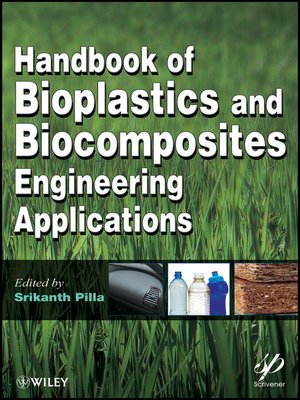Handbook of Bioplastics and Biocomposites Engineering Applications
ebook ∣ Wiley-Scrivener
By Srikanth Pilla

Sign up to save your library
With an OverDrive account, you can save your favorite libraries for at-a-glance information about availability. Find out more about OverDrive accounts.
Find this title in Libby, the library reading app by OverDrive.



Search for a digital library with this title
Title found at these libraries:
| Library Name | Distance |
|---|---|
| Loading... |
This Handbook is the first to explore the extensive applications made with bioplastics & biocomposites for the packaging, automotive, biomedical, and construction industries.
Bioplastics and biocomposites are becoming increasingly prominent because synthetic plastics and glass fiber composites are neither sustainable nor environmentally friendly.
The Handbook of Bioplastics and Biocomposites Engineering Applications brings together scientists from academia and industry to report on current research and applications in the bioplastics and biocomposites arena. This new science is interdisciplinary and integrates pure and applied sciences such as chemistry, engineering and materials science. The Handbook focuses on five main categories of applications: Packaging; Civil Engineering; Biomedical; Automotive; General Engineering.
The majority of the chapters review the properties, processing, characterization, synthesis and applications of the bio-based and biodegradable polymers and composites including:
The Handbook will be of central interest to engineers, scientists and researchers who are working in the fields of bioplastics, biocomposites, biomaterials for biomedical engineering, biochemistry, and materials science. The book will also be of great importance to engineers in many industries including automotive, biomedical, construction, and food packaging.







